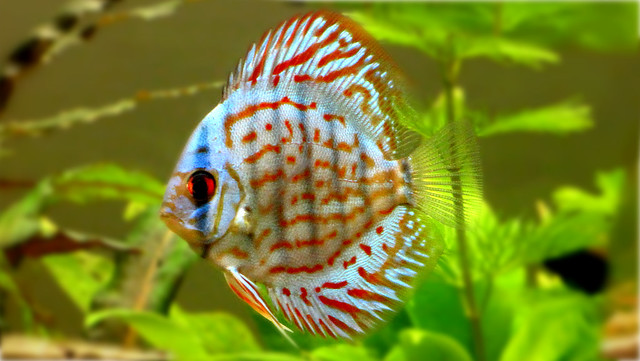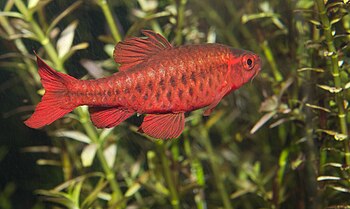 |
| Gorgonian polyps. Photographed in the reef aquarium of aquarist Mike Giangrasso. (Photo credit: Wikipedia) |
Corals are living animals that are commonly called sessile invertebrates. What this means is that they are animals that don't have a backbone (like vertebrates do) and that they are generally stuck in one spot and can't move around like most animals can. Corals are usually attached to a rock. Corals consist of many individual polyps. The polyps may have an internal or an external skeleton that is made of calcium carbonate. Each polyp has an oral opening that leads to a gastrovascular tube. There is a lot of variety in the types of food eaten by coral polyps. For example, some corals feed by using their stinging tentacles to catch small fish. Other corals eat microscopic organisms, whereas some coral polyps don't feed at all, and obtain all their nutrition from zooxanthellae (single-celled algae that live within the coral).
Corals are more complicated to keep that many saltwater fish species, and can, for instance, require more intricate currents, powerful lighting and supreme water quality. Keeping the water temperature in the ideal range is therefore imperative when you keep corals in your aquarium. Reef-building corals prefer quite shallow depths where the light penetration is good and will therefore usually grow at depths of less than 46 meters / 150 feet. The reef-building corals require plenty of strong light since they form a symbiotic relationship with photosynthetic algae. Other coral species can, however, survive without direct sunlight and live much deeper down in the ocean.
Corals should be thoroughly researched beforehand because of their often hefty price tag and demanding water, lighting and feeding requirements. The great part about live rock, aside from the biological importance of using it, is that you can use aquarium silicon sealant to shape the rocks into any type of design you desire. We now have a new term - "rockscaping". You can also use a drill to create small holes in the rock and use PVC pipes to hold them together to make columns or archways. The rockscaping possibilities are endless. Another thing you'll probably need to do is place the rock directly on the tank bottom and not on top of the sand. Sand burrowing species could get injured or worse if you place the rock on top of the sand.
Corals are very popular with aquarium enthusiasts. Some of the most common corals are now being successfully kept and grown in a rapidly growing number of home aquariums. There are hundreds of species including soft corals, corallimorpharians (mushroom corals), gorgonians, zoanthids, large-polyp stony corals, and small-polyp stony corals.
For the beginner reef aquarium, there are a number of soft corals, that require less light and less than perfect water quality standards, than their hard coral cousins. These soft corals are the better candidates for converting to a fish only or fish only with live rock aquarium tank to a reef tank with corals.
You can have coral in any sort of aquarium/fish tank i.e. fish only tanks, fish only with live rock tanks to a full reef tank.
Moving smoothly from tank to tank isn't really all that difficult. You need to move coral because believe it or not there can be turf wars in coral reef tanks. Corals on the reef compete for space. So do the corals in your aquarium. Corals are still deemed difficult for the average reef tank hobbyist but in my experience, I have not found this to be true.
Corals are found all over the world, even around the poles. Reef-building corals are however only found in warm subtropical and tropical waters. Reef-building corals are present in the Indo-Pacific Ocean and the Western Atlantic. Their habitat is generally limited to the region between 30 degrees N and 30 degrees S latitudes. In the Indo-Pacific Ocean you will find reef-building corals from the Persian Gulf and the Red Sea, and eastwards in the Indian and Pacific Oceans all the way over to Panama and a few places in the Gulf of California. In the Western Atlantic corals are living outside Florida, in the Gulf of Mexico, off the coast of Belize and around the Caribbean Islands, Bermuda and Bahamas. Reef-building corals will only live where the water temperature is warm enough; 20-28 degrees Celsius / 68-82 degrees Fahrenheit.
|








